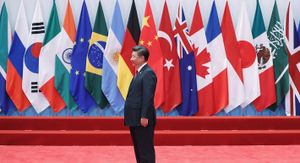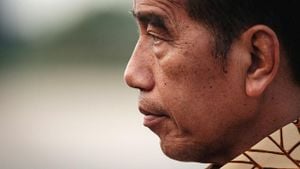Japan is experiencing significant political turbulence following the recent elections, which have raised questions about the future of the ruling coalition and its stability. With the junior coalition partner, Komeito, suffering substantial losses, its leader Keiichi Ishii resigned just four days after the election results were tallied, acknowledging his responsibility for the poor showing.
Ishii, who stepped down on October 31, cited the disappointing results, particularly Komeito's loss of eight seats, as his primary motivation for resigning. He noted, "The extremely poor showing at the polls is my responsibility as the party’s chief representative." His resignation marks the end of his brief tenure, having only been appointed to the leadership on September 28. The party's election results were particularly grim as Komeito candidates struggled against candidates from the Nippon Ishin (Japan Innovation Party), who presented strong opposition, especially around Osaka and Hyogo prefectures.
Komeito, traditionally viewed as the ruling Liberal Democratic Party’s (LDP) ally, now holds only 24 seats within the 465-seat House of Representatives. Ishii himself faced defeat in Saitama No. 14, where he was running for the first time after successfully holding his seat through proportional representation for ten consecutive terms. His loss, coupled with not being included on the party's proportional roster, meant he had no opportunity to reclaim his position.
Makoto Nishida remains as the Komeito’s secretary-general, but uncertainty looms as the party prepares for its extraordinary convention on November 9 to elect Ishii's successor. Names like Tetsuo Saito and Mitsunari Okamoto have emerged as potential candidates. According to the party's constitution, the Central Secretariat will play a key role in proposing candidates for endorsement during the convention. This shift at the leadership level raises important questions about the future of Komeito and its alignment with the LDP.
Adding to the political chaos, the ruling coalition recently lost control of the Lower House due to voter dissatisfaction, indicating broader problems within Japan’s political framework. Voter sentiments appear to reflect growing frustration with existing leadership, prompting shifts among coalition and opposition parties alike. The losses for Komeito, particularly notable as they included defeats within their traditional stronghold areas, signal not just challenges for the party but also potential shifting dynamics within the coalition.
The double blow of losing eight seats and leader Ishii’s resignation has left Komeito at a crossroads. During the election, it was evident how Nippon Ishin capitalized on Komeito's vulnerable position by mounting tougher campaigns, particularly showcasing the party's declining influence. Ishii's replacement will be pivotal, as the new leadership will need to navigate not only Komeito's internal challenges but also the expectations of voters.
The recent election results, alongside Komeito's losses, indicate possible shifts in party alliances. Analysts speculate whether this could trigger changes within the LDP as well, as younger leaders seek to revitalize the party’s image and regain lost trust among constituents. The wider political ramifications are still developing, but the signs suggest Japan's political arena will remain volatile for the foreseeable future.
Observers are curious about the potential candidates for the new leadership position. Tetsuo Saito has been mentioned for his experience, but the party's traditional values versus progressive demands from its voter base will also play significant roles. There’s speculation about how the new leader will handle the party’s communication strategy, especially after the public’s clear message during the elections.
Political analysts are currently assessing how Komeito's leadership change might affect Japan's overall governance structure and its relationships within and outside the ruling coalition. With such significant losses now behind them, both Komeito and the LDP must engage with their constituents more earnestly to regain their footing. The challenges faced are substantial, but the ability of the new leadership to adapt to the shifting political atmosphere will be key.
Japan's political climate is fraught with unpredictability after these seismic shifts. While Ishii’s leadership is now over, the candidacy pool for Komeito’s next leader will be closely watched — not only for party dynamics but also for the broader implications for Japan’s governance. The public's response to these changes will undoubtedly be pivotal as the parties work toward regaining voter confidence. How Komeito will redefine its role and leverage partnerships will be under scrutiny as they move forward. The overall political narrative seems destined for more twists over the coming months as these new leaders take charge and navigate the expectations of both party loyalists and the broader electorate.



